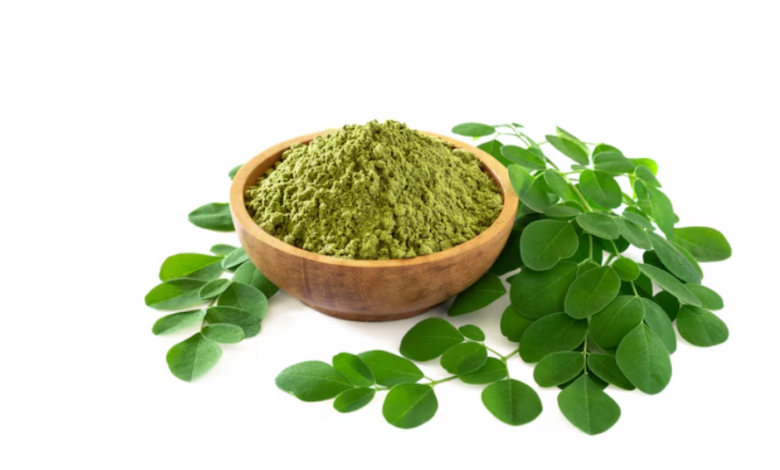A Scientific Look at Moringa’s Antioxidant Properties

It usually starts with something small. A vague sense of tiredness. Skin that’s lost its glow. Or maybe a comment from a friend: “You’ve looked a bit run-down lately.” That’s often when people begin thinking about nutrition, free radicals, and antioxidants. Not in a deep way at first. Just curiosity—why do we keep hearing about oxidative stress? And how do plants like Moringo supposedly fix it?
Some say Moringa is rich in antioxidants. Others treat it like a cure-all, tossing it into smoothies or powders without much thought. But does it really do anything? Not just in theory, but in actual biological systems? That’s where this gets interesting.
What Does Moringa Actually Do in the Body?
The term moringo has been floating around health blogs and wellness stores for years, but scientific analysis paints a more detailed picture. When looking at antioxidant behaviour, the focus turns to how Moringo interacts with free radicals, the unstable molecules that trigger oxidative stress in cells.
Now here’s the thing. Antioxidants neutralise these radicals by donating electrons. It’s introductory chemistry, but it has far-reaching effects on skin ageing, organ function, and inflammation. The compounds inside moringo—specifically flavonoids, vitamin C, and phenolic acids—have been observed doing exactly that in controlled lab conditions.
But clinical data? That’s where it thins out a little.
How Researchers Study Moringa’s Compounds
Most studies begin in vitro. Lab environments, simulated reactions, and isolated compounds. In those settings, moringo performs fairly well. One research team noted that moringo leaf extract reduced lipid peroxidation, which is often used as a biomarker for cell damage. That sounds promising, but… how much of that translates into the human body?
We’re not petri dishes.
So, researchers shift to animal studies or small-scale human trials. That’s where it gets mixed. While certain tests showed lower markers of oxidative damage after moringo supplementation, others didn’t show strong statistical shifts. Could be dosage. Could be diet. Could even be individual metabolism.
Still, it suggests that moringo isn’t just hype. It’s not perfect, either. But that nuance often gets lost.
What You Eat and How You Prepare It Actually Changes Everything
This is something many overlook. Just because moringa contains antioxidant compounds doesn’t mean you get the full benefit. For example, boiling Moringo for too long? That can degrade key nutrients. Sun-drying it on a terrace with no control over UV exposure? Same problem.
A lot also depends on bioavailability, which is how much of a nutrient is actually absorbed and used by your body. Some flavonoids need fat to be adequately absorbed. Others are broken down before they ever reach your bloodstream. And that’s before even talking about first-pass metabolism, a process that reduces the concentration of active compounds after they pass through the liver.
It’s not that Moringo doesn’t work—it’s that most people don’t know how to make it work for them.
See also: The Growing Demand for Vasectomy Services in Modern Healthcare
Compared to What, Though?
You might be wondering: “How does Moringo stack up next to something like green tea, or turmeric?” Good question.
The short answer? It depends. Green tea contains catechins, turmeric has curcumin, and moringa offers a different blend of antioxidants. Some overlap, some don’t. There’s no clear winner across all categories. What matters more is diversity. No single source of antioxidants is enough. The body seems to do better when it receives multiple types, from different foods at steady intervals.
That’s probably why people who eat diets rich in plants—not pills—tend to show better long-term health outcomes.
So… Should You Take It?
This is where things get blurry. Some people swear by Moringo. They say it helps them feel more energetic, or that their skin clears up. It could be a placebo. It could be real. The studies don’t dismiss it, but they don’t scream certainty either.
Moringa is generally safe in low to moderate doses. Still, like most botanicals, it’s not risk-free. There are some reports of gastrointestinal issues with high intake, and certain parts of the plant—like the root or bark—might not be suitable during pregnancy.
And here’s something else: a few animal studies flagged mild changes in liver enzyme activity. That doesn’t mean Moringo is harmful, but it does mean anyone with existing liver concerns should tread carefully.
The Quiet Power of Consistency
One of the biggest misconceptions about antioxidants is that they act like medicine. Take them, and something changes immediately. But antioxidants don’t work like antibiotics. They’re not quick fixes. Their real value comes from small, steady contributions over time.
Moringa might help your cells defend themselves a bit better. But if the rest of your diet is high in processed food, or if you’re under constant stress, don’t expect miracles. The point isn’t to lean on Moringo as the hero. It’s to understand that antioxidants need context to matter.
People often want neat answers. “Should I take it or not?” But real health doesn’t work in binaries. Sometimes it’s trial and error. Sometimes it’s patience. Moringo has potential, no doubt. Just don’t expect it to rewrite your biology overnight.






